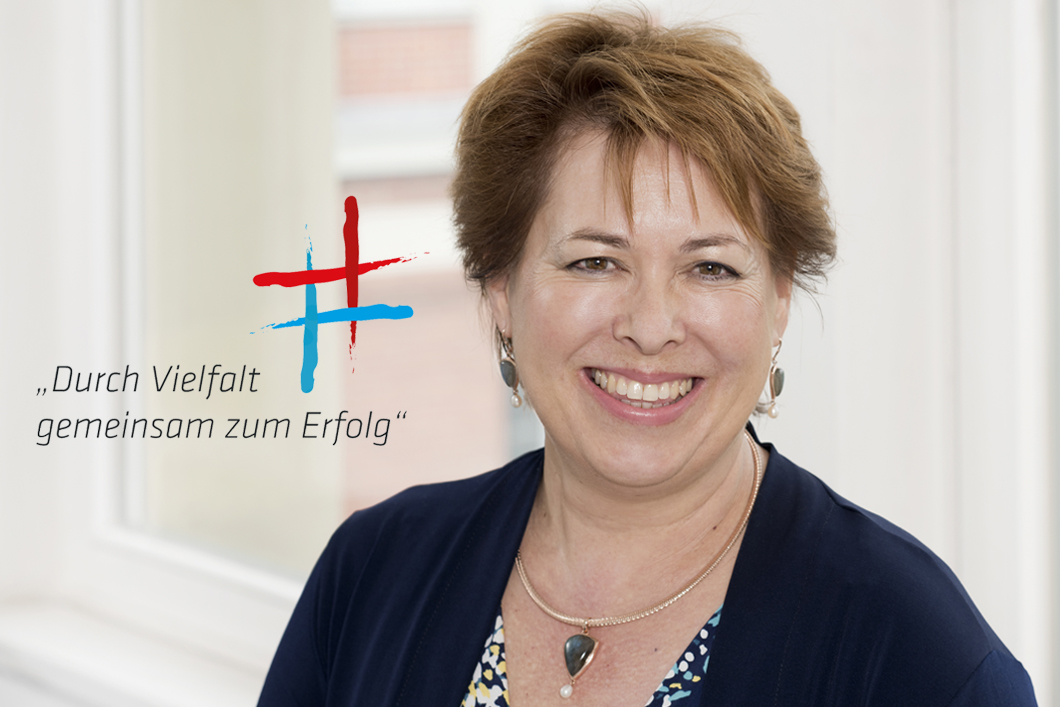
Sabine Tschiersich, Head of Division Education and Training, Health Management as well as Inclusion Officer at BAM
Source: BAM
More than 1600 people work at BAM – from different scientific backgrounds, countries and cultures and with different languages and needs. How do you combine all of that? And what are the benefits of working together? A conversation with BAM Inclusion Officer Sabine Tschiersich.
Inclusion has become a bit of a buzzword – but what does it actually mean?
Inclusion means taking a new approach with regard to the rights of disabled people, which has replaced the idea of integration that had been in place for decades. The concept of inclusion, as established by the UN Convention on the Rights of Persons with Disabilities, which has been in force in Germany since 2009, is based on the assumption that everyone is accepted in society and can participate in it with equal rights and self-determination – regardless of gender, age or origin, of religious affiliation or education, of any possible disabilities or other individual characteristics.
In an inclusive society, there is no defined normality, that every member of society should aspire to or fulfil. The only thing deemed normal is that differences exist. These differences are seen as enriching and do not affect the self-determined right of individuals to participate. Society’s role is to establish structures, in all areas of life, that make it possible for the members of this society to move freely, without barriers.
What does inclusion mean to BAM specifically?
In line with what is mentioned above, the inclusion work that happens every day at BAM is the implementation of unrestricted participation. For example, it means ensuring that severely disabled job applicants are given the opportunity to participate in interviews if equally qualified. Above all, it is also about accessibility when designing laboratories, offices or when introducing software. The work on inclusion at BAM is very versatile and permeates all areas.
How do inclusion officers and representatives work together?
Both functions are provided for in the German Social Act (SGB) IX: The severely disabled persons’ representative is elected by the severely disabled employees and the inclusion officer is appointed by the employer for all matters concerning severely disabled employees. At BAM, Herbert Saul is the representative of the severely disabled and I’m the inclusion officer. Both of us, as Mr Saul so aptly points out, are social partners and work closely together. We aim to implement the law of severely disabled persons for the benefit of both severely disabled employees and the company.
This requires a high level of communication and coordination. I have an extremely trustworthy and committed partner in Mr Saul and I very much enjoy working with him.
What matters to employees: in everyday work, what role does inclusion play in science and administration?
We spend a lot of time advising employees. A major focus is supporting employees with the application for severely disabled status or procedures to change the level of the severity of disabled persons. Consultations on workplace tools and design are also some of our everyday duties.
What might successful inclusion at BAM look like?
There are many examples of successful inclusion. For example, the inclusion group itself is very diverse. It consists of the elected members of the representative body for severely disabled persons, one member of the staff council and myself. At the beginning of our work, we needed to bond and discover our strengths and talents and discuss health limitations. Since then we have grown into a strong team and each member contributes to the overall success according to their abilities. Health restrictions, such as reduced vision or hearing, do not have a significant effect on our work. Everyone involved has learned to be considerate and to distribute activities according to ability.
What else are you aspiring to, in terms of inclusion?
I hope that employees, and in particular, managers, will continue to take a constructive approach to inclusion issues. It’s worth remembering that we are all often only a small step away from being restricted by health matters ourselves. We need to find common solutions – not reasons why things can’t or don’t work. Such solution-oriented approach helps us move forward, not only on the matter of inclusion.
What can we do as individuals?
Each one of us can work on our attitude towards others. For me, inclusion goes beyond the actual implementation of the law on severely disabled persons. It can enrich our coexistence in terms of appreciating others and adding value. Those who see fellow human beings as unique individuals, each endowed with a wide variety of qualities and talents, and not as “standardised”, will be inclined to be kinder to others – and will experience diversity as an enrichment for themselves and for the quality of the work they do together.


